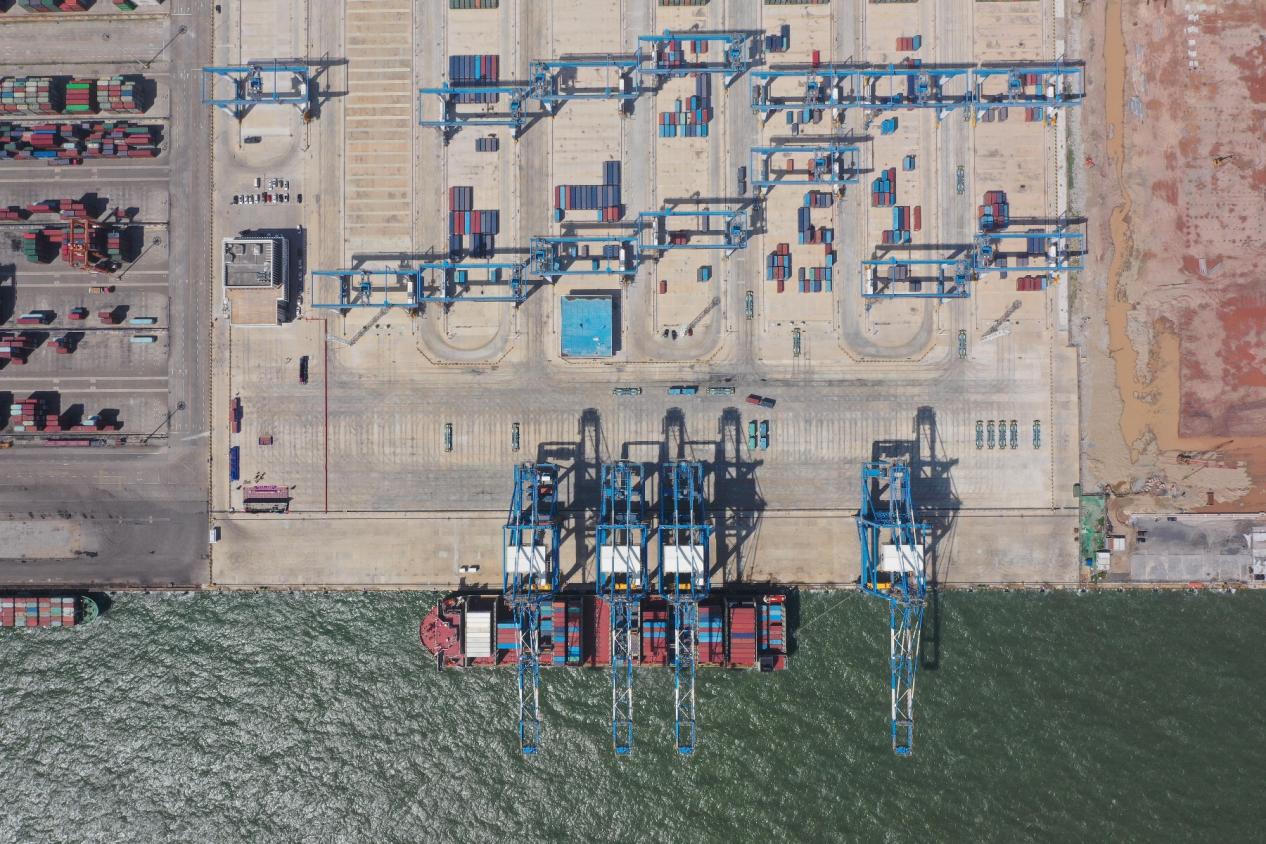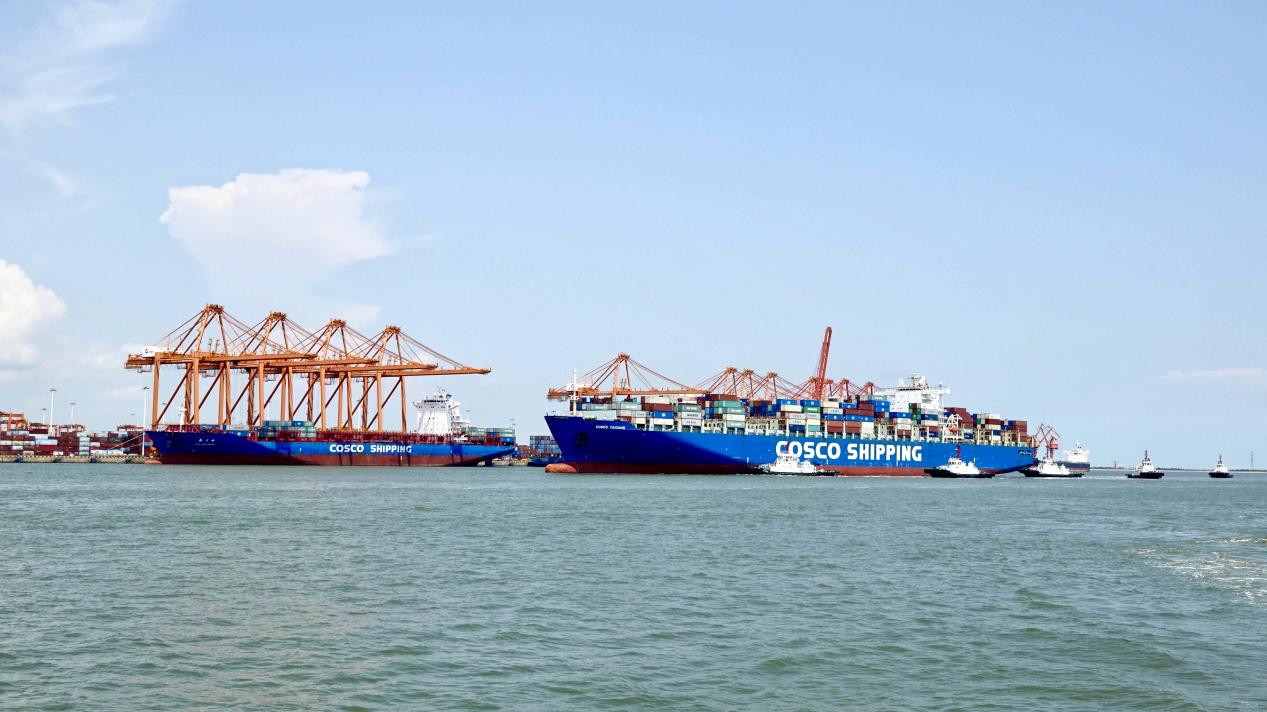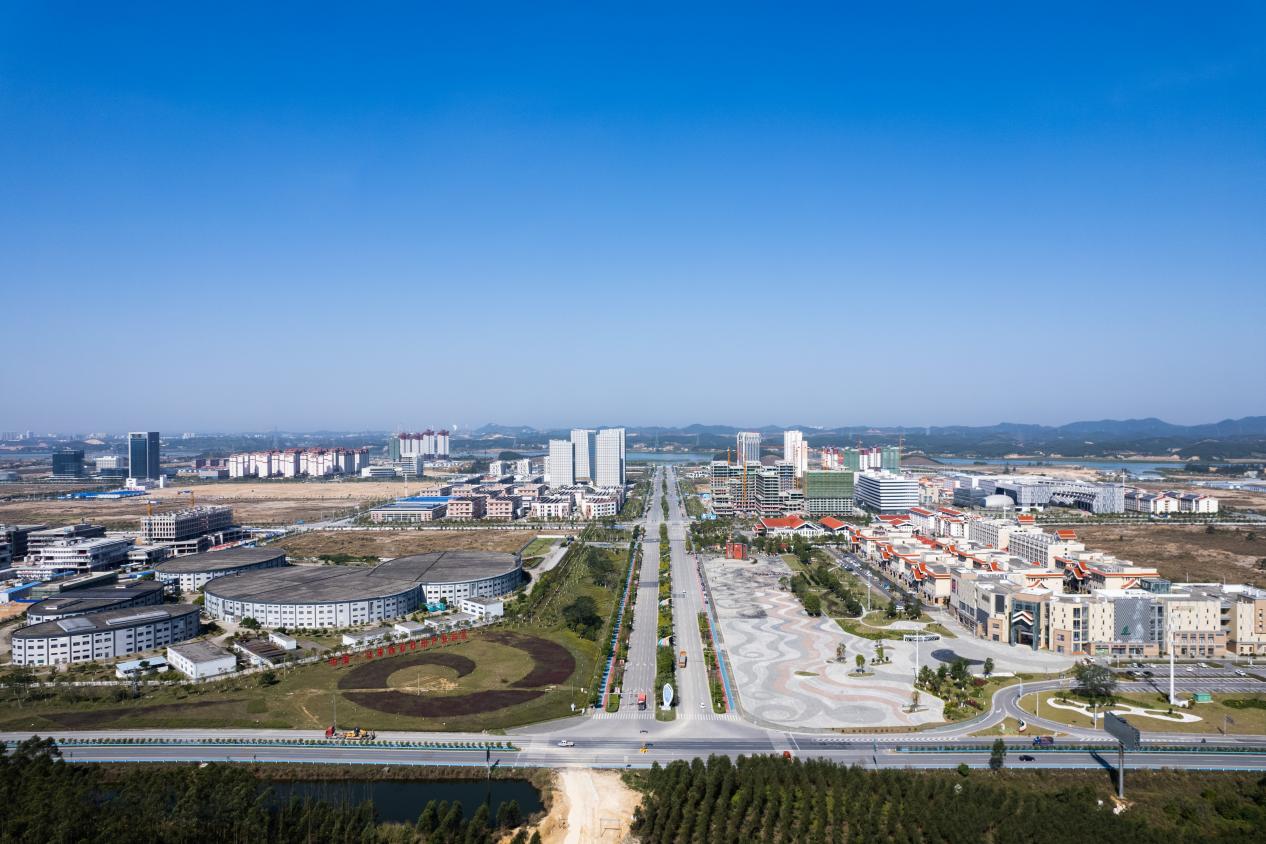

Written by Zhong Shuangxia / Translated by Xie Zongming
Thirty years ago, Qinzhou Port opened in a gun salute so loud as if the world could hear it. Two 10,000-ton-class terminals started construction at a deserted beach. Thirty years later, when people announced in a ship’s steam whistle that the new berth is put into service, Qinzhou Port saw China’s first full automatic terminal for sea-rail combined transportation, with the world’s first U-shaped layout, operationalized. Thirty years fly in a blink of an eye. Qinzhou Port has grown from a small fishing village to a world-class port.

Build, run, and be strong
In April 1991 when China started to implement the Western Development Strategy, Qinzhou decided to develop the city around the port industry, laying stress on building Qinzhou Port into a key project of the six strategic focuses for regional economic development. At the same time, the groundwork for Qinzhou Port’s construction started.
In August 1992, with more than 20 million yuan raised by the citizens and governors, Qinzhou overcame its financial difficulties and officially started the construction of the port’s two 10,000-ton-class start-up terminals. On January 16, 1994, the port celebrated the opening ceremony of the terminals, which ended Qinzhou’s situation of being a coastal city without a port.
In February 2007, Guangxi Beibu Gulf International Port Group Co., Ltd. (Beibu Gulf Port Group) integrated the public port resources of Fangchenggang City, Qinzhou City, and Beihai City, becoming the shareholder of Qinzhou Port and the first enterprise to achieve cross administrative region integration of port properties.
Since the establishment of the Group, Qinzhou Port Area has seen fruitful results earned by the hardworking port staff. From 2007 to 2021, the cargo throughput of Qinzhou Port Area has increased from 5.1539 million tons to 113 million tons, marking an annual increase of 24.68%. The port area’s cargo throughput is one of the tops among China’s coastal ports.

By the end of 2021, 58 routes have chosen Qinzhou Port Area as the port of call, which mainly cover the major ports in China’s coastal regions, Southeast Asia, and Northeast Asia; the pelagic routes through the port area can reach South Africa and Eastern South America.
In recent years, a series of significant projects were launched in Qinzhou Port Area. Currently, there are one 300,000-ton-class crude oil terminal and six 100,000-ton-class special berths for container ships; there are two functional 100,000-ton-class automatic berths for container ships, and two more are under modification. The berthing capacity of the port area increases significantly.
In 2021, the annual cargo throughput of Qinzhou Port Area was 113 million tons, marking an 11.8% year-onyear increase and reaching the 100-million-ton mark 30 days ahead compared to last year’s result. The annual container throughput was 4.6271 million TEUs, a 17.1% annual growth.
Thirty years of effort is all that Qinzhou Port Area shows to the world on how to construct a world-class port.
Glorious chapter of developing the port
Looking back, Qinzhou Port has changed from a small and backward fishing village in the past to a prosperous modern port city now. Historical achievements have been made in economic and social development, and the dream of a big port in south China is being realized step by step.
Over the past three decades, Qinzhou Port has unswervingly developed the seaward economy and achieved a historic leap in its comprehensive strength. Over the past 30 years, the accumulated fixed asset investment has exceeded 200 billion yuan. In 2021, the regional GDP reached 33.187 billion yuan, 948 times that Beibu Gulf International Gateway Port of the first statistics of 35 million yuan in 1994; The fiscal revenue increased from 1.4 million yuan in 1996 to 12.48 billion yuan in 2021, an average annual growth of 46%; In 1999, the total industrial output value above designated scale was only 2 million yuan, but in 2021, it reached 92.34 billion yuan. When the port opened in 1994, the throughput was only 122,000 tons. In 2018, it exceeded 100 million tons for the first time and reached 167 million tons in 2021; In 2002, there were only 303 TEUs of containers, and in 2021, the number reached 4.627 million. In the first half of 2022, the regional GDP increased by 15.3%, continuing to take the lead in Qinzhou and even Guangxi.
Over the past three decades, Qinzhou Port has promoted reform and improved its strategic positioning in an all-round way. It created the new international cooperation mode of “Two Countries, Twin Parks” between China and Malaysia, striving to build it the “flagship project of China-Malaysia cooperation and the demonstration zone of ChinaASEAN cooperation”. It was also approved to establish a port area under the China (Guangxi) Pilot Free Trade Zone.

Over the past three decades, Qinzhou Port has built ports and made breakthroughs in corridor construction. The first sea-rail combined automatic terminal in China was officially launched in Qinzhou Port, navigable to 200,000-ton one-way container ships. What’s more, 300,000-ton oil terminals were put into operation here. All these make Qinzhou Port one of the ports with the largest loading and unloading capacity in China.
Over the past three decades, Qinzhou Port has facilitated industrial development and witnessed explosive growth in port industry. It has created a trillion-level green chemical industry cluster and many hundred-billion-level featured industries like new energy and new materials, offshore equipment manufacturing, electronic information, etc., forming a seaward industrial cluster with port characteristics.
Over the past three decades, Qinzhou Port has developed the city along the coast, improving the overall appearance of the city. It strengthened the integrated development of port, industry, and the city, and promoted the construction of coastal and industrial new cities.
Thirty years for yet another new start
With key projects like the 300,000-ton-class oil terminal and China’s first sea-rail combined container terminal of Qinzhou Port entering into operation, Qinzhou Port Area will adhere to the “Four First-Class” Goals by promoting faster high-quality development of the New Western Land-Sea Corridor and Beibu Gulf International Gateway Port and taking a significant step forward to achieve the prosperous seaward economy.
Looking back at the past and forward to the future, how will Qinzhou Port start a new journey based on the thirty-long years it went through?
In the future, Qinzhou Port Area will stay on the goal of becoming a mega-port with an annual throughput of 10 million TEUs. It will further improve the infrastructure for support, integrate logistics channels, optimize the environment, and speed up the construction for the port to become an international trading hub. The port area will also keep enhancing the management and improve the quality of service, promote its high-quality development, keep facilitating the construction of Beibu Gulf International Gateway Port and International Hub Port, and better serve the construction of the New Western Land-Sea Corridor. The port area’s goal is that by the end of the 14th Five-Year Plan, its traffic capacity would reach 250 million tons and the container throughput would reach 8 million TEUs, making it become one of the top 10 port areas in China and opening a new development pattern of a prosperous seaward economy.
桂ICP备14000177号 Copyright@2006-2013 Guangxi China-ASEAN Panorama Magazine Agency Co., Ltd. All Rights Reserved